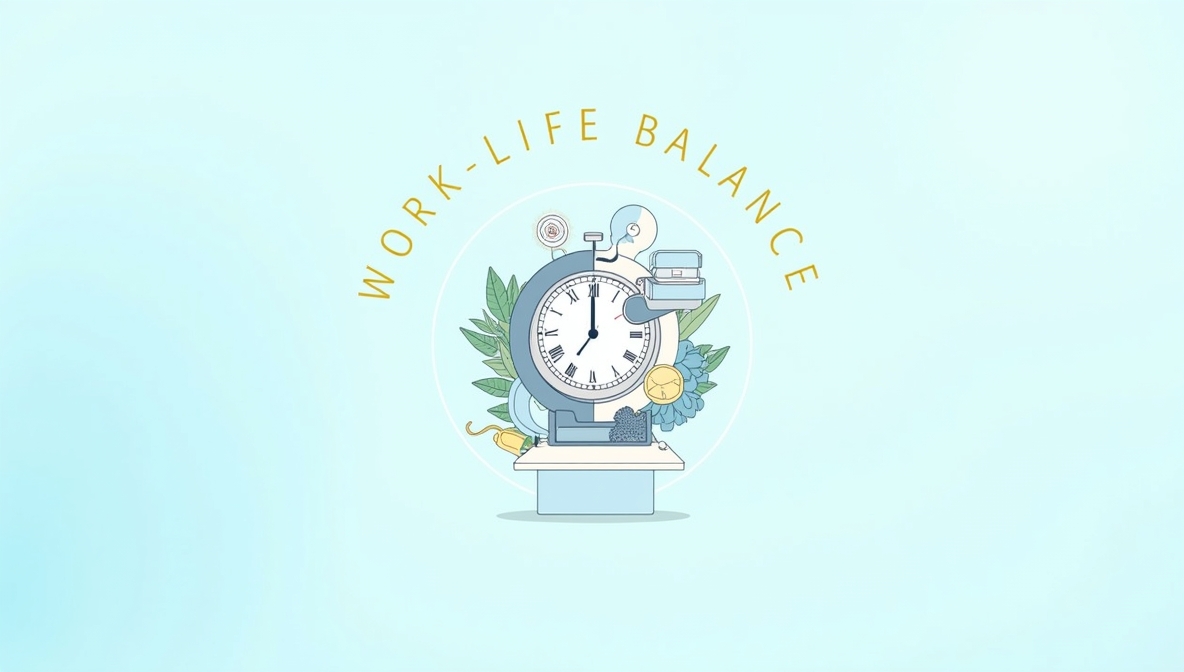In today’s fast-paced world, it’s easy to get caught in the hustle of work and daily responsibilities. Whether you’re managing a career, family, or personal projects, finding balance can be difficult. However, achieving a healthy work-life balance is essential not only for your productivity but also for your well-being.
Work-life balance refers to the ability to manage your professional and personal life in a way that doesn’t overwhelm you. It’s about finding harmony between your work duties and personal activities, ensuring that neither area suffers.
When work-life balance is out of whack, stress levels rise, and overall productivity can decrease. On the other hand, maintaining balance allows you to enjoy your personal time without guilt, leading to improved focus when it’s time to work. Here are practical tips to help you regain control and achieve that all-important balance.
1. Set Clear Boundaries
One of the first steps to improving work-life balance is setting clear boundaries. This means defining specific work hours and personal time. When you’re at work, focus solely on work. When you’re off the clock, fully disengage from professional tasks.
This also involves creating physical boundaries—such as having a separate workspace if you work from home. Setting boundaries protects your personal time and ensures that your work doesn’t overflow into your personal life.
2. Learn to Say No
Many people struggle with work-life balance because they’re afraid to say no. Whether it’s a colleague asking for help or taking on an extra project, saying yes can lead to overwhelming schedules.
Learning to say no, respectfully, is a vital skill in preserving your time. Before committing to additional responsibilities, assess whether they align with your priorities. Saying no can free up time for the things that matter most.
3. Prioritize Tasks
When you have a long list of to-dos, it’s easy to become overwhelmed. That’s why prioritization is key. Focus on the tasks that will have the greatest impact first, and leave less important tasks for later.
One popular method for prioritization is the Eisenhower Matrix. This technique divides tasks into four categories:
Urgent and important
Not urgent but important
Urgent but not important
Neither urgent nor important
By organizing your tasks, you can ensure that your time is spent efficiently and that your most important commitments are addressed first.
4. Make Time for Yourself
It’s easy to get caught up in work, family obligations, or other responsibilities, but personal time is essential for maintaining balance. Schedule time for self-care, hobbies, and relaxation—whether that’s reading a book, going for a walk, or simply enjoying time with loved ones.
Self-care doesn’t just benefit your physical health; it also improves your mental clarity and emotional well-being. Taking regular breaks and time off from your usual responsibilities helps you recharge so that you can return to work feeling refreshed.
5. Embrace Flexibility
Achieving work-life balance doesn’t mean following a rigid schedule. Life is unpredictable, and sometimes, your work or personal commitments may shift. Embrace flexibility by adjusting your plans as needed, and don’t be afraid to experiment with different routines until you find what works best for you.
Some days will require more focus on work, while other days may need more time for personal matters. Flexibility allows you to adapt without feeling like you’re failing to maintain balance.
6. Delegate When Possible
You don’t have to do everything yourself. Whether at work or home, look for opportunities to delegate tasks. At work, ask for help from colleagues or subordinates. At home, share household responsibilities with family members or hire services if possible.
Delegating tasks allows you to focus on what matters most and prevents you from burning out. It’s not about doing less work—it’s about doing the right work and ensuring you have time for other aspects of your life.
7. Set Realistic Goals
Another important aspect of work-life balance is setting realistic goals. Overloading yourself with impossible expectations can cause frustration and stress. Break down large tasks into manageable chunks and celebrate small achievements along the way.
Having realistic goals allows you to track progress and feel accomplished without feeling overwhelmed by the end result.
Conclusion
Achieving a healthy work-life balance takes time and conscious effort. By setting clear boundaries, prioritizing tasks, making time for yourself, and learning to delegate, you can improve both your productivity and your well-being. Remember, work-life balance isn’t about perfection—it’s about finding harmony between the demands of work and the joys of personal life.
By maintaining a balance, you’ll not only improve your efficiency and performance but also enhance your overall happiness. So take the steps today to restore balance in your life—your future self will thank you!

